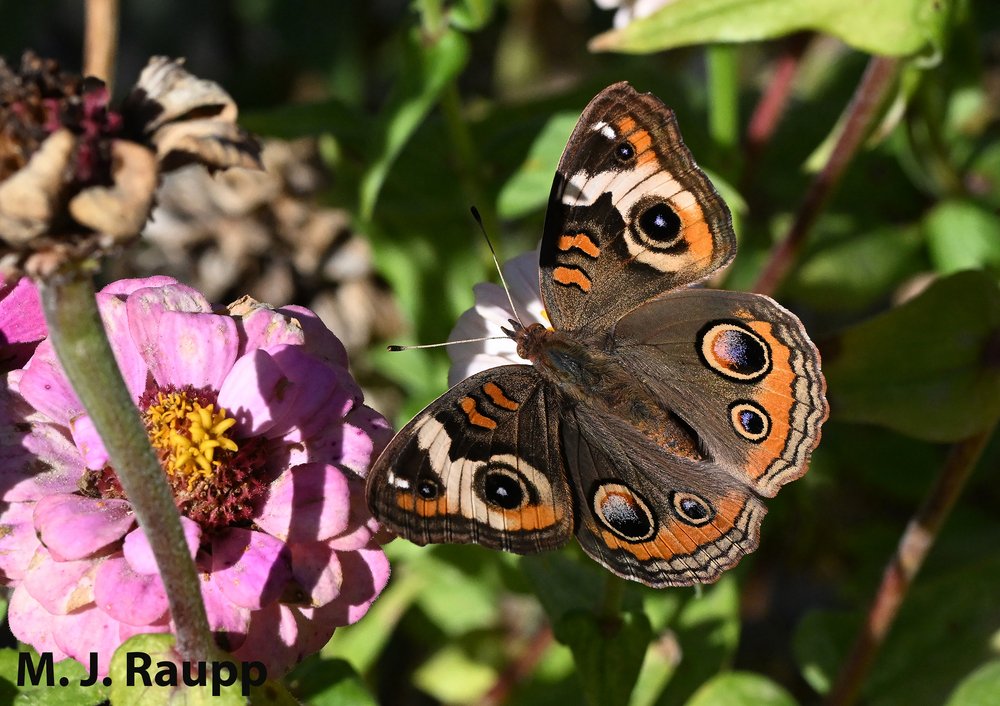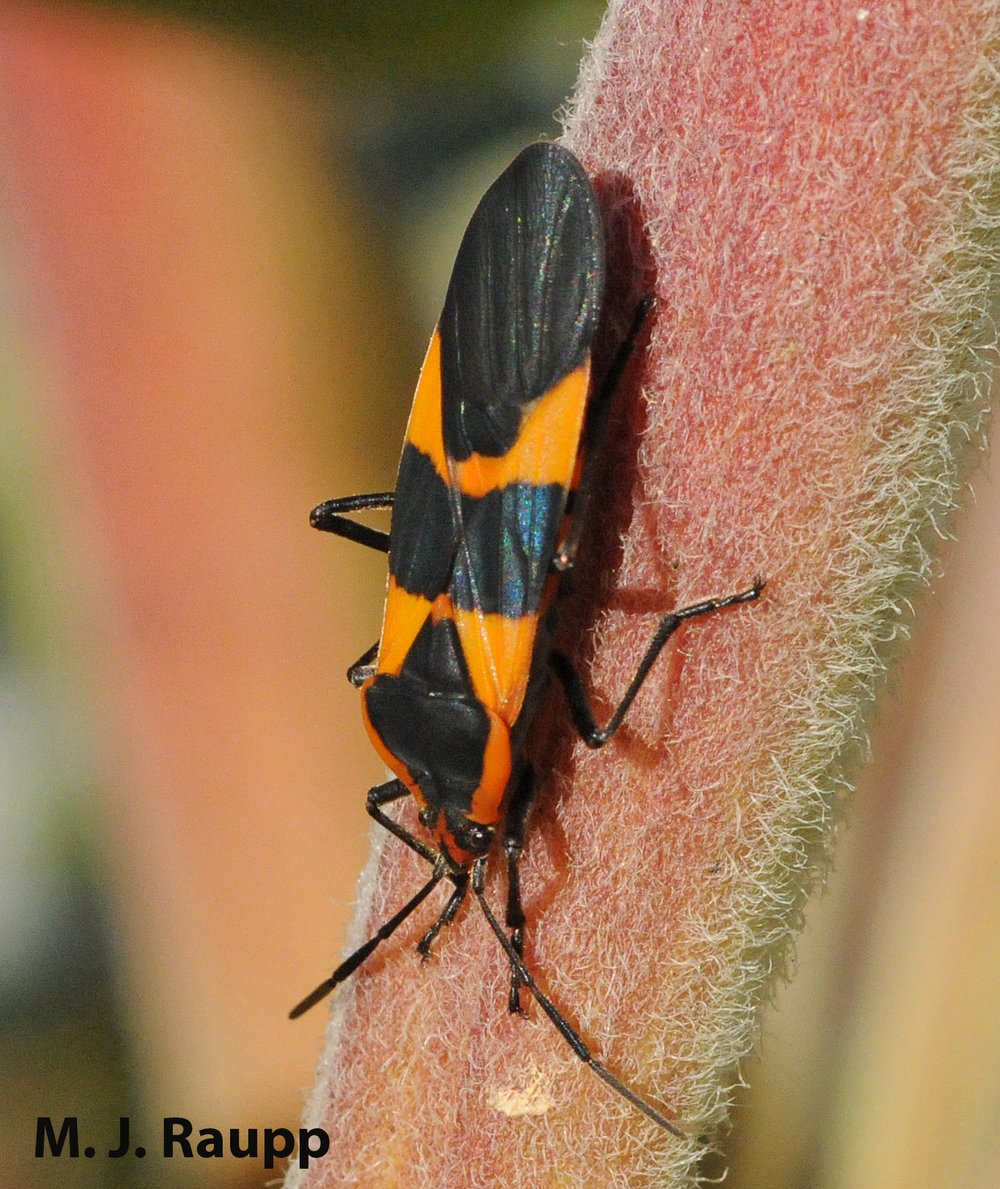
As my zinnias deliver their last blossoms, this pretty common buckeye sips nectar in preparation for its journey south to escape a chilly winter in the DMV.
In last week’s episode we explored the wonders and perils of migratory Monarchs in the eastern and western regions of the US. Although the journeys of the Monarchs are remarkable, these are not the only migratory visitors to the DMV. This week we meet several other sojourners that make annual warm-weather visits to our temperate region in spring and summer, and then beat a hasty retreat when old man winter warns of chilly days and nights ahead. For the past several weeks in my rapidly fading perennial flower bed, bedraggled zinnias provided some last-minute meals for peripatetic pollinators before they get out of town in advance of a killing frost. One of my absolute favorites is the beautiful Common Buckeye. It arrives in the DMV in the spring and early summer as a migrant from its overwintering redoubts in southern states, where it has three generations each year. During the warmth of summer, females lay eggs and attendant caterpillars consume plantains, foxgloves, figworts, and verbenas. After completing two generations in our region, adults tank-up on nectar from late blooming flowers like my zinnias before heading south.
Late in autumn, bedraggled zinnias provide much needed nutrients for migratory butterflies before they embark on journeys to overwintering grounds in the south. Recently, this pretty Common Buckeye made daily visits to some fading zinnias in preparation for its journey. Not one to wait for Halloween, an orange and black Variegated Fritillary stopped by earlier this season to sip nectar from a cone flower. This pretty Painted Lady also visited the garden before heading south for the winter. And butterflies aren’t the only migratory insects found in your garden. Did you know that Large Milkweed Bugs you see on your milkweeds also head south for the winter before returning to the DMV next spring?

When not visiting flowers, variegated fritillaries often bask in the bright autumn sun before taking flight.
Another lovely visitor to our region is the pretty Variegated Fritillary. This member of the orange and black Halloween ensemble also arrives in later spring and early summer in the DMV. It enjoys as many as three generations before heading south for the winter. Unlike larvae of the buckeye, I often find variegated fritillary caterpillars in my gardens. Several years ago, I willingly surrendered the battle to maintain a lawn as a monoculture of exotic grasses and now, floristically speaking, my yard has become quite diverse. Among the winners in the ground cover competition, particularly in shady spots and landscape beds, violets rule. With regularity, I notice significant nibbles and bites at the margins of the omnipresent violets, and regularly discover glorious larvae of the Variegated Fritillary.
Whether munching leaves of hooded violets or petals of a pansy, variegated fritillary caterpillars find these members of the Viola clan delectable. Adults love to nectar on cone flowers in the summer and can be seen in late autumn basking in the sun among fallen leaves before heading south for the winter.

One of the most astounding migrants of the insect world, this pretty painted lady stopped by the flower bed to carbo-load before escaping to warmer climes in advance of winter.
Last week I also had the good fortune to spot a Painted Lady on my zinnias. This lady has been called “the planet’s most cosmopolitan butterfly” by virtue of its worldwide distribution. It is found on every continent except Antarctica. Painted Ladies also colonize the DMV each year from their overwintering grounds in Mexico and the southern US. Painted Lady caterpillars can be found on members of the Asteraceae like thistle and burdock, mallows including hibiscus, and a few other herbaceous plant families. I’ve often thought that the eastern Monarch butterfly sets the standard for long distance migrations with its annual 3,000-mile trip to Mexico. Scientists in Europe discovered that the Painted Lady travels some 9,000 miles on its multigenerational annual migrations between Africa and Northern Europe. Wow!

Large milkweed bugs are also seasonal migrants spending the summer in the DMV before retreating to warmer regions to escape northern winters.
Are butterflies the only migratory six-legged sojourners in the DMV? Not at all. Several other insects conduct annual migrations to our region in spring and head south from the DMV to escape a frosty, wintery death. One common migrant familiar to milkweed enthusiasts is the Large Milkweed Bug. This red and black harlequin arrives from the south in late spring and early summer. Adults lay eggs on milkweed pods and immature stages called nymphs use sucking mouthparts to obtain vital nutrients from developing milkweed seeds. As milkweed wane in autumn, Large Milkweed Bugs migrate to warmer zones. With record warmth here in the DMV and some flowering plants still providing rewards of nectar and pollen, you may yet have a chance to see some of these migratory wonders before they hit the road or, more accurately, take wing for refuge in the sunny south.
Acknowledgements
References for this week’s episode include “Caterpillars of North America” by David Wagner, “A Swift Guide to Butterflies of North America” by Jeffrey Glassberg, Maryland Biodiversity Project, “Featured Creature, common name: common buckeye, scientific name: Junonia coenia Hübner (Insecta: Lepidoptera: Nymphalidae” by Jaret C. Daniels, “Direct and correlated responses to selection among life-history traits in milkweed bugs (Oncopeltus fasciatus)” by J. O. Palmer and H. Dingle, and “Multi-generational long-distance migration of insects: Studying the painted lady butterfly in the Western Palaearctic” by Constanti Stefanescu and 26 other scientists.
No comments:
Post a Comment